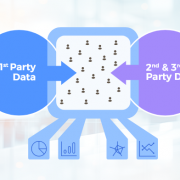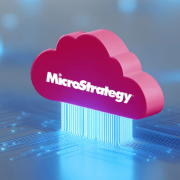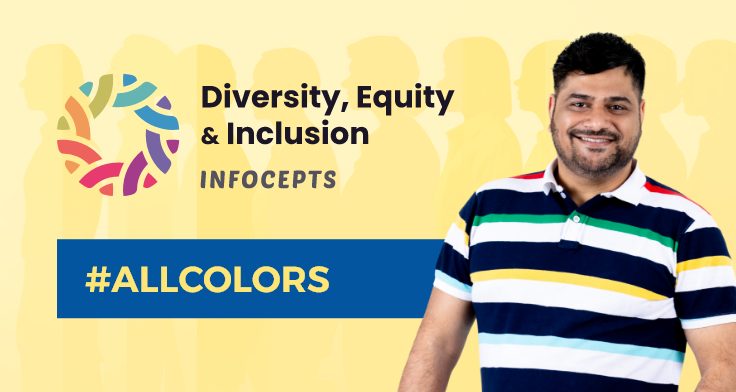Launching a Diversity, Equity, and Inclusion (DEI) program is a commendable first step, but the true test lies in making it effective and sustainable. A recent Forbes survey reveals that 62% of employees that participated, believe DEI programs are ineffective, and nearly half (46%) feel personally let down by these initiatives. This highlights the importance of not just starting a DEI program, but building one that truly works and resonates with your organization.
There’s no one-size-fits-all approach to DEI; it requires careful study, continuous learning, and a customized strategy. In this article, I share my experiences and insights to help you craft a DEI program that is not only robust but also adaptable to your unique organizational needs.
DEI is DIY
Do it yourself! DEI is a personal journey, not just a program. As a DEI leader, it’s crucial to start by cultivating a mindset of acceptance and equality within yourself. True inclusivity means valuing and respecting diverse perspectives, backgrounds, and identities.
To effectively launch and sustain a DEI program in your organization, you must genuinely embrace this change internally. Inclusiveness isn’t just about policies; it’s a personal commitment to treating everyone fairly and valuing their unique contributions. This authenticity is essential for fostering a truly inclusive environment.
Diversity: Beyond the Binary
Diversity in the workplace goes beyond gender. If you only think of gender equality when you hear DEI, it’s time for an upgrade. Consider aspects such as cultural diversity, gender identity, LGBTQ+ inclusion, racial equity, disability inclusion, mental health inclusion, and age diversity. The field is complex and rapidly evolving.
Before defining DEI for your organization, it’s crucial to understand the full scope of diversity. Selecting your DEI focus areas before launching the program is crucial. While starting with gender equality is a common approach, it may limit future success in creating a truly inclusive workplace if other areas are not also prioritized.
At Infocepts, we have established seven pillars of DEI that make our program comprehensive, adaptable, and genuinely inclusive. We are committed to revisiting these pillars every five years to ensure they remain relevant and effective in promoting a diverse and inclusive environment.
Is Divide and Conquer the Best Approach?
While DEI working groups or DEI pods can be effective in large organizations, they may not be the best fit for small or medium-sized workplaces. DEI pods are groups of volunteers dedicated to achieving specific Diversity, Equity, and Inclusion (DEI) goals. These groups, often organized by geographical location or focus areas like Women’s Groups or LGBTQIA+ Ally Groups, require significant time and resources to establish and maintain, which can detract from core business operations and overall DEI objectives. Here are some common challenges of the DEI Pod Approach for Small and Mid-Size Businesses:
- Outdated and Ineffective: The pod approach often creates cultural gaps that are difficult to bridge. For example, attending a DEI event with only female speakers and participants can inadvertently highlight existing divides rather than bridge them. Over time, multiple DEI groups might end up consolidating into one, which may not be effective.
- Silos and Fragmentation: DEI initiatives should unify an organization, but creating small groups can lead to separation and a lack of alignment on shared goals. This fragmentation can hinder the organization from achieving a cohesive and unified DEI strategy.
- Conflicts and Misalignment: Without a clear, unified definition of DEI, different groups may pursue disparate objectives, leading to misalignment and confusion about the overall goals of the organization.
- Increased Workload and Costs: Managing multiple pods requires extensive monitoring, coordination, and administrative support. This can necessitate hiring a full-time DEI resource to manage the groups, which may not be cost-effective given the resources required.
For smaller and mid-size organizations, a more integrated and centralized DEI approach might be more beneficial. This approach allows for a unified strategy, aligning all efforts towards common DEI goals. As the organization grows, it may become feasible to implement more formal DEI structures and establish multiple working groups or employee resource groups. This phased approach ensures that DEI initiatives are manageable, effective, and aligned with the organization’s capacity and resources.
Beyond Good Intentions: Proving DEI Results
Implementing DEI best practices can greatly improve your organizational culture and overall success. Since DEI progress is often gradual, setting quarterly goals may feel discouraging. Instead, track the impact of these initiatives over a long-term period, such as five years, using well-defined parameters. However, on a quarterly basis, focus on identifying and monitoring key DEI metrics. Here are a few essential metrics to consider, tailored to align with your organization’s priorities:
- Demographic Data: Track diversity across levels and departments, including gender, race, ethnicity, age, etc.
- Employee Sentiment: Use surveys to gauge inclusivity, belonging, fairness, and support within the organization.
- Attrition and Retention Rates: Monitor turnover rates among different demographic groups.
- Promotion and Career Progression: Evaluate advancement rates for employees from diverse backgrounds.
- Recruitment Metrics: Assess the diversity of your candidate pool and the effectiveness of your recruitment efforts.
- Inclusion Metrics: Measure how employees feel about inclusion and whether they feel valued.
- Leadership Representation: Track diversity within leadership roles and the pipeline for future leaders.
- Business Outcomes: Analyze the impact of DEI initiatives on innovation, employee engagement, and customer satisfaction.
It’s important to remember that DEI is not just about numbers; it’s also about creating an environment where all employees feel safe and included. While metrics like the diversity of staff and the number of events held are important, the true measure of success lies in how safe and accepted employees feel. Are differences being embraced? Is there a nurturing and inclusive space for everyone? Ultimately, the goal is to cultivate a vibrant, supportive, and inclusive environment for all employees.
DEI at Infocepts
#AllColors is our Diversity, Equity & Inclusion (DEI) ally group, inspired by the uniqueness of each color and how they blend together harmoniously to create a beautiful mosaic. At Infocepts, our vision is to cultivate a diverse workforce where every associate feels respected and included. We strive to create a safe space where each individual can contribute their unique perspectives, making our workplace vibrant, inclusive, and welcoming for all.
Infocepts #AllColors aims to:
- Challenge existing cultural norms and raise awareness about diversity.
- Foster open dialogue and experimentation through innovative programs.
- Curate a safe and inclusive space through workshops, discussions, events, and projects.
Looking for a diverse and inclusive workplace? Explore our career opportunities.
Recent Blogs

Unlocking Secure Data Collaboration: Best Practices for Snowflake Data Clean Rooms
February 3, 2025

Moving to MicroStrategy Cloud: Why Now and How Infocepts Can Help
January 31, 2025

The Real Story Behind AI and Personalization at Starbucks
December 23, 2024

Breaking Down the AI Mental Block
December 18, 2024


